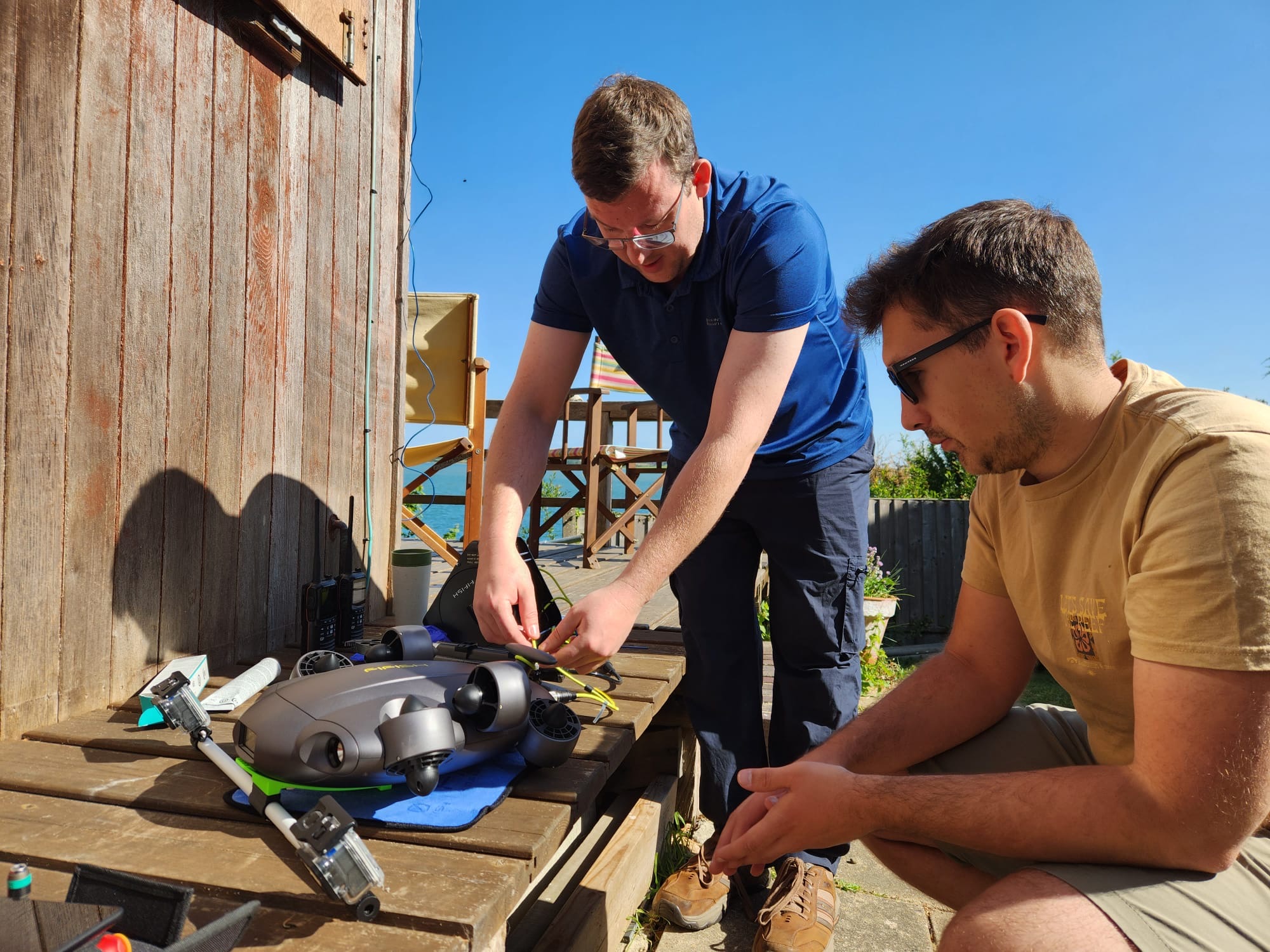The FiFish V6 Expert
Adding the FiFish ROV allows the MTRU access to remote marine surveys. The team tested the ROV out in the field at Wrabness, Essex, which is situated along the River Stour.

Field Objectives
- To test the functionality and effectiveness of the ROV against tides.
- To assess the effectiveness of the 3D-printed attachments for data collection of:
- Stereo benthic video surveys for 3D modelling and complexity analysis of the seabed.
- And, biological samples (including substrate).
The 3D-printed attachments
Our PhD researcher, Russ Connelly, designed and printed several attachments for the ROV using CAD software: propeller guards (to protect the blades from debris), a camera system for recording surveys, and a water filtering pump system (that is yet to be tested).
Stereo-video is a key tool within marine surveys to a) capture fish abundance and biomass, and b) to generate overlapping videos of the seabed, which are utilised for habitat virtual reconstructions and subsequent habitat complexity analysis. The purpose of the survey will determine the required angle of the cameras (either facing downwards to the seabed or at a 90-degree angle, facing the water column). Russ took the typical design of a marine stereo video system (a set pole length with multiple cameras attached) and applied it to the size and weight of the FiFish ROV, creating several parts that connect the camera pole system securely to the ROV. With flexibility of camera angles being a key aspect of the design, Russ ensured that the camera attachment mechanism had just enough leverage to change the angle during equipment setup, however, was secured tight enough to the pole so that the camera angles wouldn’t shift during marine surveys. The distance between the cameras is 50 cm, a key factor to know when ensuring high level of image overlap for 3D modelling purposes. An internal skeleton design was also printed and fitted within the PVC pole to increase rigidity.

ROV deployment
To make deployment as smooth as possible and reduce ROV impact with stones, Louis waded out a few meters into the river to drop, recover, and keep an eye on the ROV. Meanwhile, the rest of the team tried to manoeuvre the set-up through the water column using the remote control.
(Easier said than done, but we soon got the hang of it!)






Stereo-video outcomes
An initial look at the collected photogrammetry data suggests that the ROV set-up is a great success for benthic recording, with the ROV being effective against the tide. This provides a positive approach for future marine surveys!
ROV grab attachment
After testing out the stereo-video system, we switched the ROV attachment to the grab mechanism and tested the functionality and effectiveness of its ability to grab a specific seaweed specimen.
(Spoiler, it worked great!


Next steps…
- Generate a 3D model using the ROV test photogrammetry data.
- Continue testing the ROV in other aquatic environments to improve user handling before use in future project data collection.
- Test out the 3D printed water filtering pump system.

